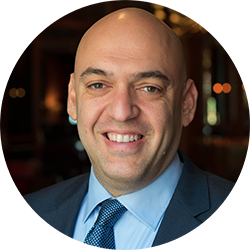Energy Drinks in Elementary School. It does sound sinister, especially when coupled with the following headline that recently appeared in an article on Yahoo News called, “3 New Dangerous Drug Habits In Teens.”
The article discusses the growing non-medical use of prescription drugs among teens as well as the snorting of inhalants such as glue and Dust Off, a spray that is designed to clean computer and video game screens. The Yahoo News story begins, however, by sounding the alarm on elementary school students drinking highly caffeinated drinks. At first I thought that this part of the story was misplaced, as elementary students are almost never teenagers. The editors at Yahoo News surely know this, so how do they connect caffeine use in elementary school with “Dangerous Drug Habits in Teens?” They quote a seemingly authoritative person who trots out the old “gateway drug” argument.
In recent years, drinks that combine alcohol with caffeine, such as Four Loko, have been blamed for the deaths of teens and college students. But a new epidemic involves younger children: elementary school students are drinking highly caffeinated energy drinks to catch a buzz. Even without alcohol, these drinks are dangerous to kids’ health.
“Energy drinks are gateway for elementary school kids,” said Mike Gimbel, a national substance abuse educator. “They drink it like it’s water. Nurses have kids coming in with heart palpitations.”
Sigh. Here we go again.
The notion of a gateway drug became popular in the 1980s and 1990s in connection with marijuana. Various drug czars, officially known as the Head of the White House’s Office of National Drug Control Policy, have argued that marijuana should continue be criminalized as a Class I Substance (such as cocaine and heroin) because marijuana is a gateway drug that leads to subsequent use of more harmful drugs.
The data have been clear that children between the ages of 12 and 17 tend to use marijuana before they use drugs such as cocaine. This is a known and unsurprising correlation. Marijuana is much more widely available and is perceived to be less harmful. But most of the studies who looked at the question have concluded that there is no specific ladder of drug use. In fact, a vast majority of young people who smoke marijuana never use cocaine, let alone heroin.
As a result, many researchers have concluded that reducing marijuana use or increasing the penalties for its use won’t reduce the number of teens who use cocaine, heroin, or other illegal drugs. An article discussing a widely-cited study published in 2002 by Andrew R. Morral, Daniel F. McCaffery, and Susan Paddock, researchers at RAND’s Drug Policy Research Center, challenged the basic assumption of the gateway drug argument:
“If our model is right, it has important policy implications, “Morral said. For example it suggests that policies aimed at reducing or eliminating marijuana availability are unlikely to make a dent in the hard drug problem. When enforcement resources that could have used against cocaine or heroin are instead used against marijuana, this could have the unintended effect of worsening heroin and cocaine use.”
We should be particularly suspicious of arguments that invoke the gateway effect in young adults. The fact is that almost everyone who has a DUI conviction previously rode a bicycle. Likewise, a high percentage of teens who use marijuana drink alcohol and earlier in their life consumed milk and fruit juice. And we have all seen how amped up some kids can get on fruit juice and other sugary drinks.
So the next time some expert suggests that drinking too much sugar or caffeine is the gateway to criminality, tell them to chill Let’s be clear. I am not suggesting that it is a good thing for ten-year-old children to drink unlimited quantities of highly caffeinated beverages. We can all agree on that. What we should be careful about, however, is falling for simplistic and unsubstantiated arguments that have and continue to be used to justify the criminalization of conduct by minors.

